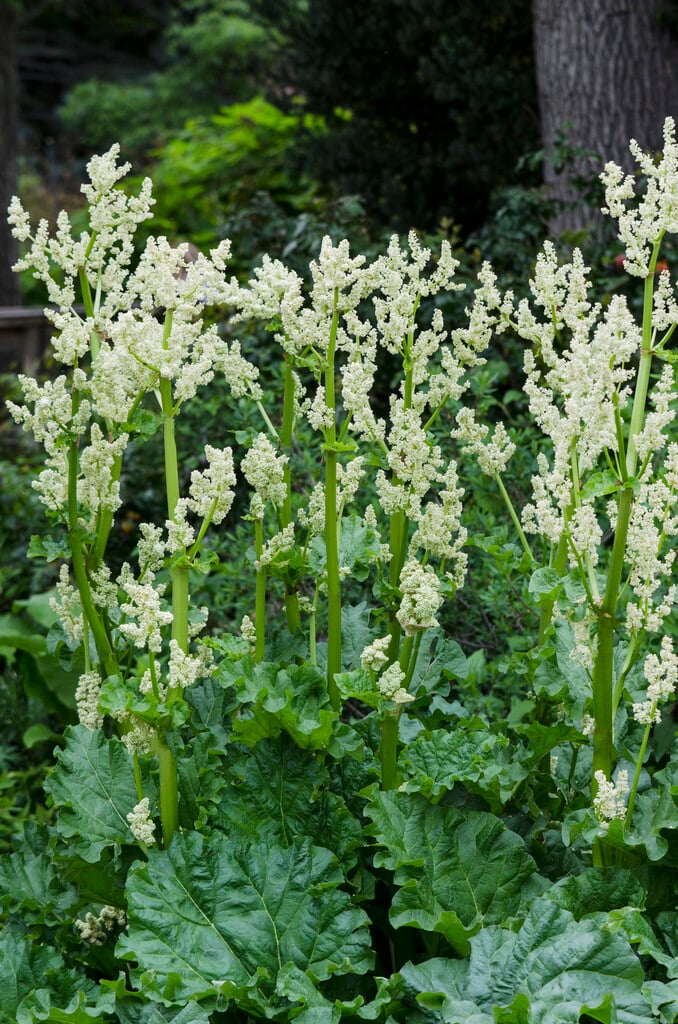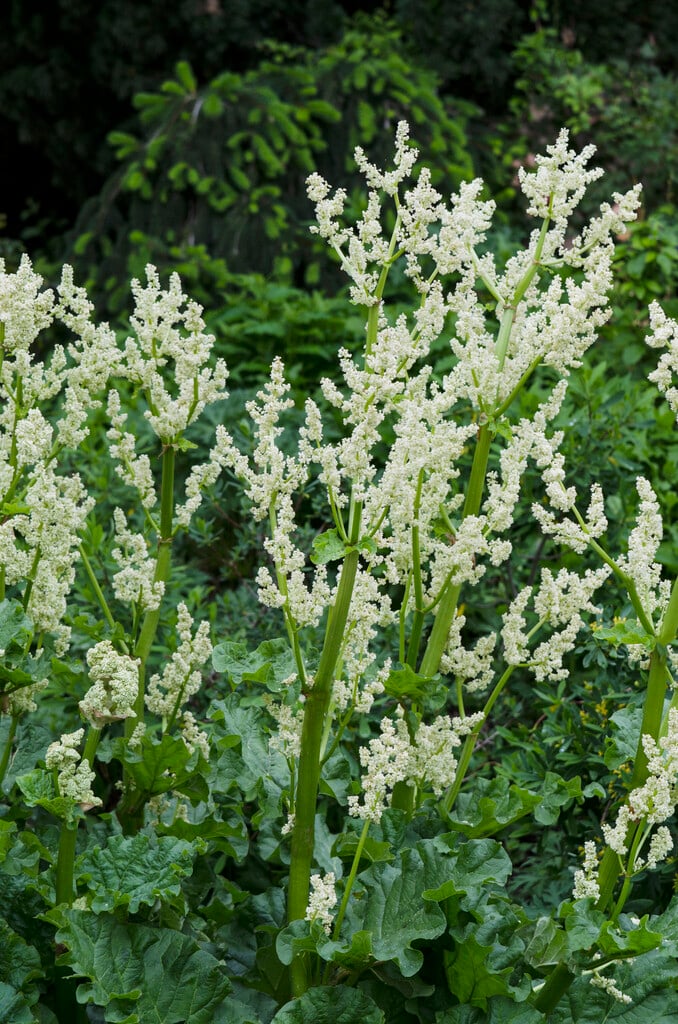Rheum australe
Himalayan rhubarb
A large rhizomatous perennial to 2m high, with oval to rounded basal leaves up to 75cm long that emerge from the ground in late spring. Leaves are mid green, with wavy edges, coarse hairs on the undersides and long, thick reddish stems; they are sometimes bronze when young and tinted red in autumn. In summer, produces tall, branching flower stems, bearing tiny, densely packed, nodding reddish-purple flowers. An ornamental plant grown for its striking substance
Other common names
Nepal rhubarbred-veined Himalayan rhubarb
see morered-veined pie plant
Indian rhubarb
Synonyms
Rheum emodiSize
Ultimate height
1.5–2.5 metresTime to ultimate height
2–5 yearsUltimate spread
1.5–2.5 metresGrowing conditions
Moisture
Moist but well–drainedpH
Acid, NeutralColour & scent
| Stem | Flower | Foliage | Fruit | |
| Spring | Green Bronze | |||
|---|---|---|---|---|
| Summer | Red Purple | Green | ||
| Autumn | Green Yellow Red | |||
| Winter |
Position
- Full sun
- Partial shade
Aspect
East–facing or South–facing or West–facing
Exposure
Exposed or Sheltered Hardiness
H6Botanical details
- Family
- Polygonaceae
- Native to GB / Ireland
- No
- Foliage
- Deciduous
- Habit
- Clump forming
- Potentially harmful
- Harmful if eaten. Wear gloves and other protective equipment when handling Pets: Harmful if eaten - for further information and contact numbers regarding pets, see the HTA guide to potentially harmful plants
- Genus
Rheum are robust rhizomatous herbaceous perennials with large, simple or palmately lobed leaves and tall leafy stems bearing large panicles of tiny flowers
- Name status
Correct
How to grow
Cultivation
Grow in deep, moist, fertile soil, ideally in a sunny position. Mulch with organic matter in early spring. Needs plenty of space
Propagation
Propagate by seed, sown in containers in a cold frame in autumn, or by division in early spring
Suggested planting locations and garden types
- Architectural
- Cottage and informal garden
- Flower borders and beds
Pruning
Cut back faded leaves at the end of the season
Pests
Diseases
May be susceptible to crown rot, honey fungus and virus diseases
Love gardening
Sign up to receive regular gardening tips, inspiration, offers and more
View our Privacy Policy
Get involved
The Royal Horticultural Society is the UK’s leading gardening charity. We aim to enrich everyone’s life through plants, and make the UK a greener and more beautiful place.

